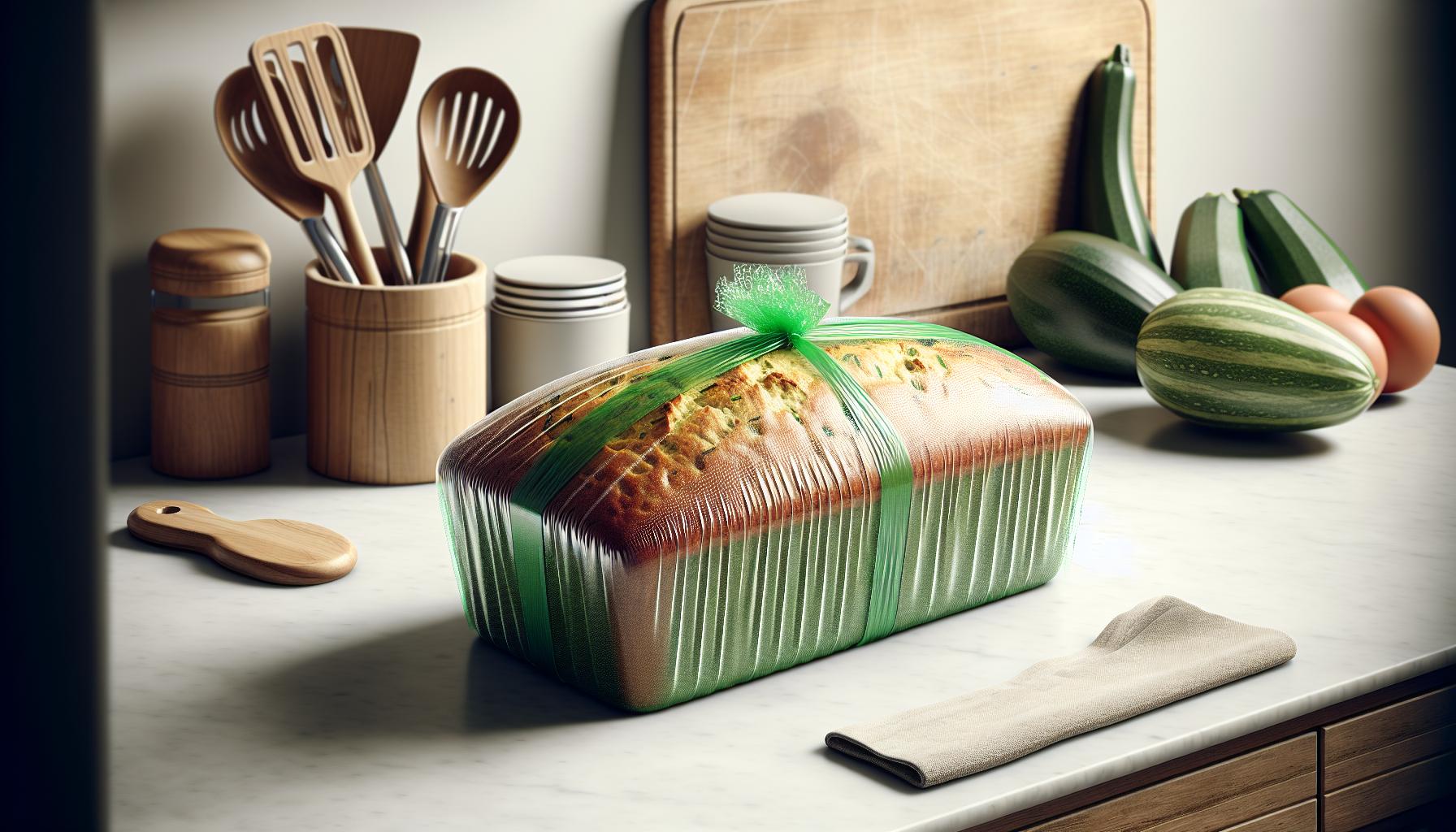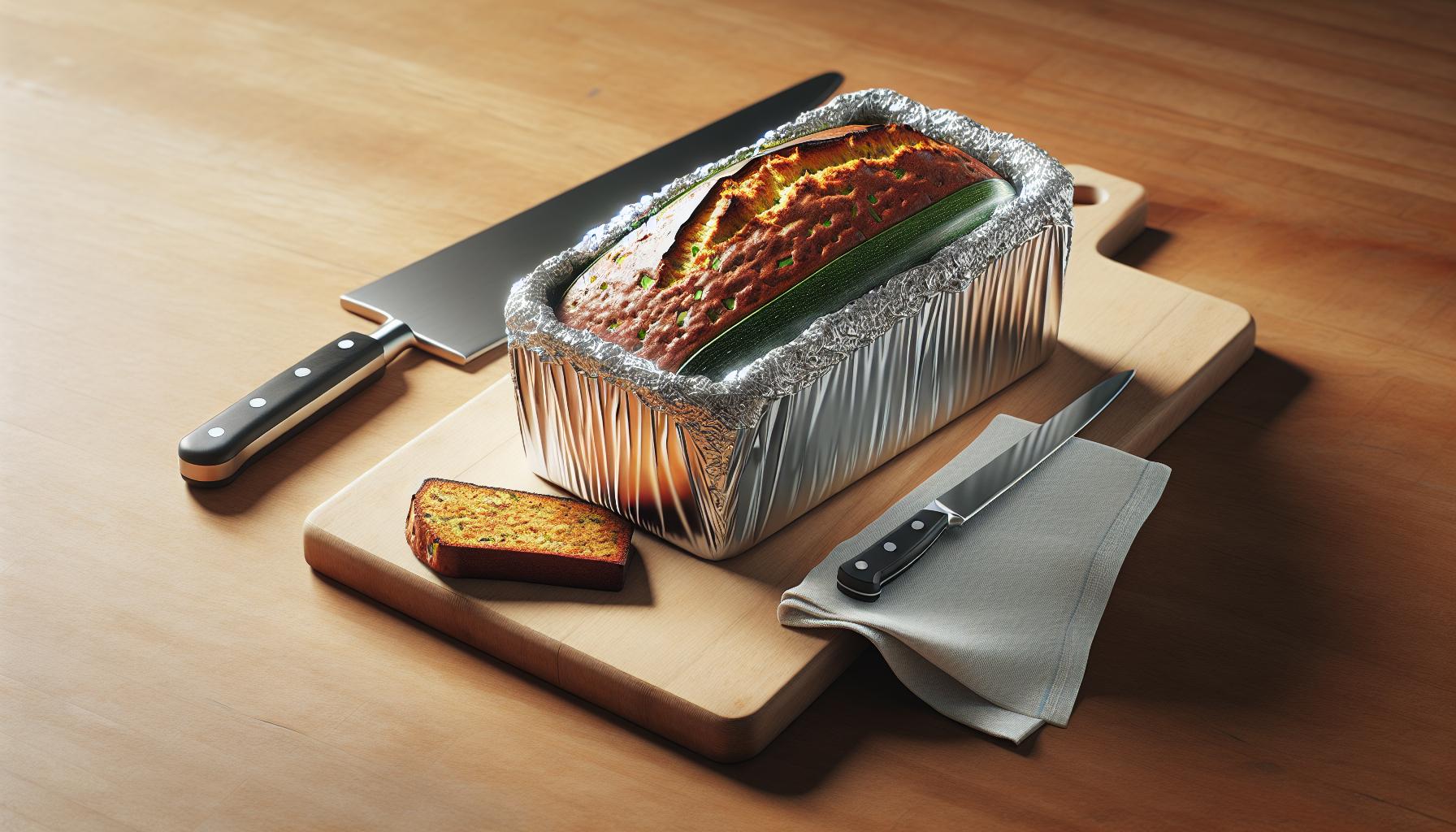Garden-fresh zucchini bread brings warmth and comfort to any home but enjoying this delightful treat year-round requires proper freezing techniques. Preserving zucchini bread’s moisture and flavor through freezing allows bakers to make the most of their summer harvest while maintaining that fresh-baked taste.
Freezing zucchini bread is a straightforward process that involves cooling the bread completely, wrapping it tightly in plastic wrap and aluminum foil, then storing it in an airtight freezer bag for up to six months.
Whether planning ahead for holiday gifts or maximizing a bumper crop of garden zucchini these storage methods ensure every slice retains its homemade goodness. From preventing freezer burn to proper thawing techniques mastering the art of freezing zucchini bread opens up endless possibilities for enjoying this beloved treat any time of year.
“1. Cool bread completely
Cooling zucchini bread to room temperature prevents moisture from becoming trapped during the freezing process. Place the freshly baked loaf on a wire cooling rack for 2-3 hours until it reaches room temperature throughout. A completely cooled loaf eliminates condensation which causes ice crystals to form.
Key cooling tips:
- Remove bread from the pan after 10 minutes
- Place on a wire rack away from heat sources
- Allow air circulation on all sides
- Test center temperature with a probe thermometer
- Ensure no warmth remains before freezing
- Bottom feels room temperature when touched
- No steam rises when sliced
- Crust maintains firm texture
- Knife comes out clean with no residue
- Bread slices cleanly without gummy texture
This critical cooling step prevents freezer burn by eliminating excess moisture from the bread’s structure. The texture stays perfectly moist with no soggy spots or dried edges after thawing.
2. Wrap tightly in plastic wrap

Proper wrapping technique creates an airtight seal that locks in freshness. Press the plastic wrap firmly against all sides of the cooled zucchini bread, starting from the bottom. Wrap the entire loaf with a minimum of two complete layers, ensuring no air pockets remain between the bread surface and the wrap.
For a whole loaf, stretch the plastic wrap taut while wrapping to prevent loose sections. Pull the wrap around the short ends first then secure the long sides with overlapping layers. Press the seams together firmly to create a complete seal.
For individual slices, place each piece in the center of a plastic wrap square. Fold the wrap over the slice from all four sides creating a tight packet. This method prevents freezer burn on exposed edges while making it easy to thaw single portions.
- Date of freezing
- Type of zucchini bread
- Any special ingredients
- Expected use-by date (3-6 months)
3. Wrap again in aluminum foil

Adding a layer of aluminum foil creates an essential barrier against freezer burn. Place the plastic-wrapped zucchini bread on a flat sheet of aluminum foil, ensuring the foil extends 2-3 inches beyond all edges. Fold the edges tightly around the loaf, crimping the seams to form a complete seal. For sliced bread, wrap each plastic-covered piece individually in foil, pressing out any air pockets between layers.
Pro tip: Use heavy-duty aluminum foil for maximum protection during long-term storage. The heavier gauge material prevents tearing while creating a more effective moisture barrier than standard foil.
Creating an effective double barrier:
- Press foil firmly against plastic wrap
- Fold ends with precise creases
- Create airtight corners by double-folding
- Smooth out wrinkles for complete contact
This double-wrapping method locks in freshness for up to 6 months when stored at 0°F (-18°C). The combination of plastic wrap’s moisture retention properties with aluminum foil’s protective qualities creates optimal freezer storage conditions.
4. Place in freezer bag

Place the wrapped zucchini bread into a freezer-safe bag or airtight container. Remove excess air from the bag by pressing gently around the wrapped bread before sealing. For individual slices, arrange them in a single layer inside the freezer bag to prevent sticking.
A few key tips for optimal freezer bag storage:
- Label the bag with the date using a permanent marker
- Store flat in the freezer to maintain shape
- Press out air pockets between slices
- Use heavy-duty freezer bags rated for long-term storage
- Keep the bag sealed tightly after each use
Adding a freezer bag creates a third protective barrier against freezer burn, working with the plastic wrap and aluminum foil layers. Store the bagged zucchini bread in the back of the freezer where temperatures remain most consistent. Multiple small bags work better than one large bag for storing individual slices.
5. Label and freeze up to 6 months
“
Label each wrapped zucchini bread package with date of freezing recipe type using a permanent marker. Store the wrapped bread in the back of the freezer at 0°F (-18°C) where temperatures remain consistent. Position loaves flat on freezer shelves to maintain shape during storage.
Storage Duration Reference:
| Storage Method | Maximum Storage Time | Optimal Temperature |
|---|---|---|
| Freezer Storage | 6 months | 0°F (-18°C) |
| Deep Freezer | 6 months | -10°F (-23°C) |
Arrange wrapped individual slices in a single layer inside labeled freezer bags to prevent sticking together. Write essential details on each package:
- Freezing date
- Recipe variation (classic plain nuts chocolate chip)
- Special ingredients or dietary notes
- Use-by date (6 months from freezing)
Check stored zucchini bread monthly for signs of freezer burn or damage to wrapping. Rotate older packages to the front ensuring first-in-first-out usage. Replace damaged wrapping immediately to maintain freshness.



